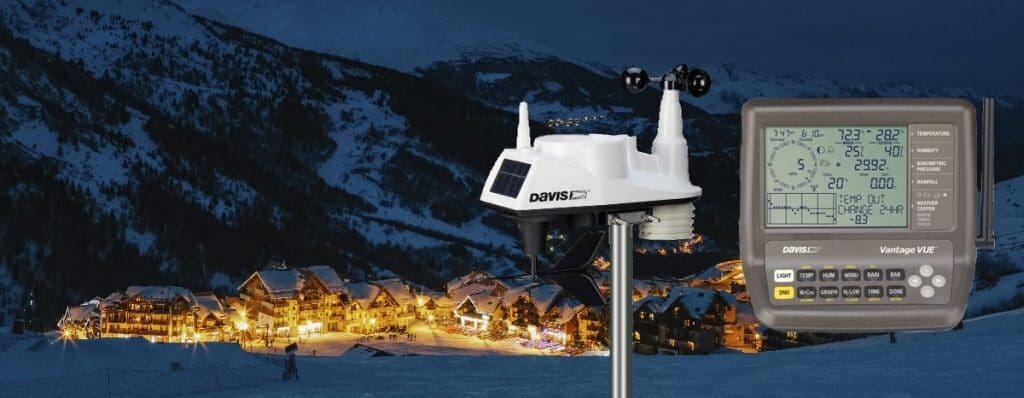Where to Install Your Weather Station


For most uses, its best to take a pragmatic view of where to install your weather station. Bear in mind that you want readings for your location 'warts and all', and not a open space somewhere else. Very often the location will be affected by the local urban, commercial, geographic and vegetation topography.
Temperature and Humidity Sensor
Your temperature and humidity sensors are best located in a shaded environment out of direct sunlight and weather. The north facing side of a wall or fence is good, but bear in mind radiated heat from an occupied building. A purpose-made screen will help, or even a home-made one such as a white ice cream tub with ventilation holes. Force ventilating the screen will further improve accuracy and response.
If you have to mount it in a sunny location, then shade it behind something e.g. a shiny biscuit tin lid painted black on the reverse.
Anemometer and Wind Vane
Anemometers and wind vanes are ideally placed as high as you can mount them away from surrounding features and vegetation to ensure a clear air flow. Of course a 10 metre pole in the middle of an open field would be good, but not many people have that opportunity!. Otherwise any pole or post clear of obstruction would be good. Often a fence post or aerial pole will work well.
If you are going to mount it on a building or chimney, try to get it as clear of the building as possible to help negate the venturi effect of the building. Try to locate it on the prevailing side, usually SW in the UK. Do not put it immediately on top of a large blank wall as during strong winds the rising air will have a marked affect on readings.
Rain Gauge
It is very important that the rain gauge is level; even a slight tilt can change the rain reading. In a strong wind, a metal pole will lean enough to affect the readings unless it is secured top & bottom.
Secondly, try to ensure that it is not in the lee (shelter of) of a feature or vegetation. Often a flat roof is a suitable place.
The standard accepted exposure of a rain gauge is at a height of c.300mm above level grass surface and away from any obstructions. This is often impractical, which is why Davis supply theirs for 1200mm high; this is acceptable for most amateurs and professionals.
You might also be interested in How to Maintain Your Davis Weather Station





